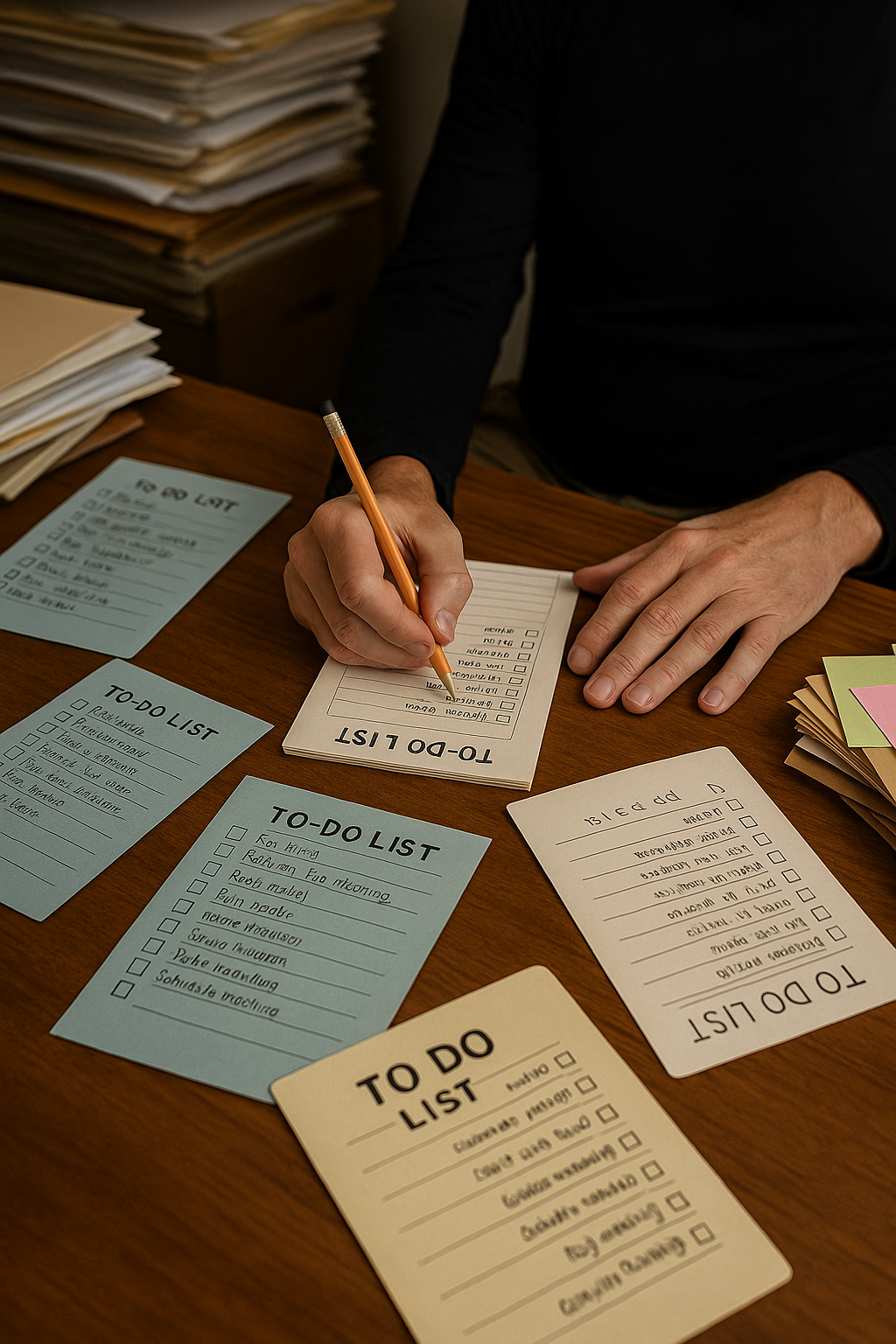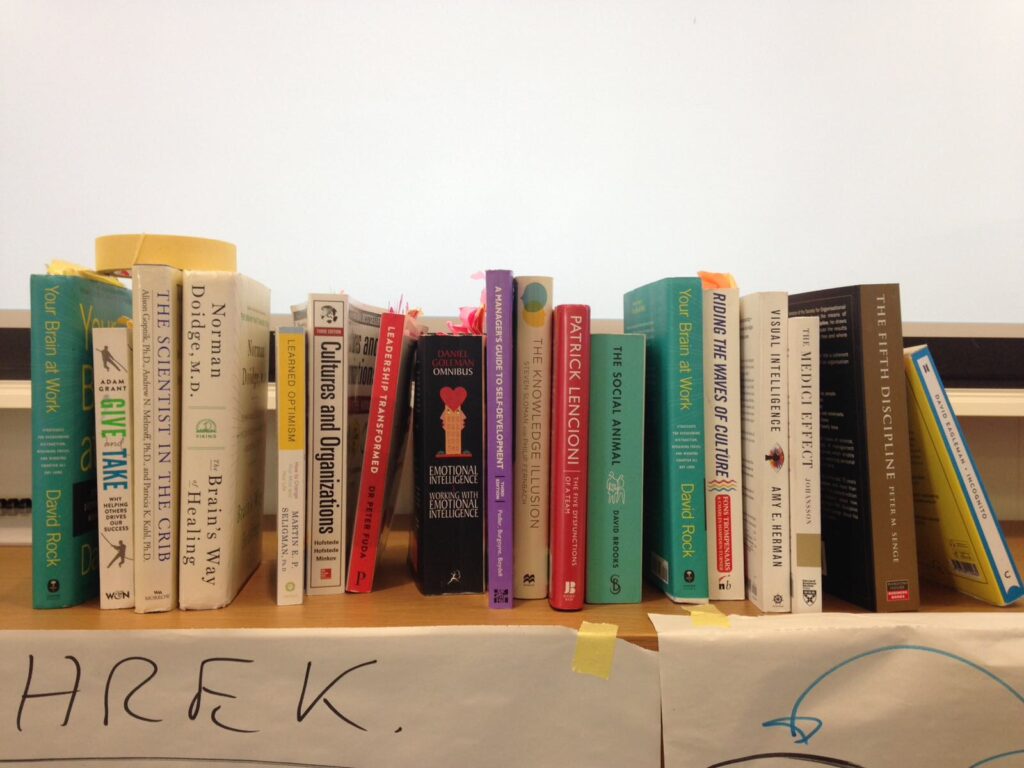Let’s talk about to-do lists—those smug little columns of unmet potential that whisper, “You should be doing more,” just as you settle into your chair with a hobnob and the fleeting dream of peace.
I’ve had a complicated, emotionally charged relationship with lists for years. I’ve written them in notebooks, on apps, on the bathroom mirror in toothpaste (don’t recommend), and once—when all else failed—on a banana. I’ve even colour-coded them using five shades of highlighter that were meant to represent urgency, but mostly ended up reflecting my mood.
But the problem isn’t the list. It’s never the list.
It’s that moment when you glance at item one—“Write proposal,” “Call Derek (again),” “Clear out the loft”—and your brain, ever the traitor, pipes up with:
“…Or we could make a cup of tea and Google whether alpacas can live indoors.”
And just like that, the sacred art of procrastination is underway.
The Neuroscience of Doing Absolutely Sod All
Here’s what’s really going on. You’re not lazy. You’re not disorganised. You’re being neurologically hijacked.
When a task feels ambiguous, unpleasant, or has any whiff of potential failure (like navigating your loft, a dusty Bermuda Triangle of broken fans and unread manuals), your limbic system lights up like a DEFCON alarm. That’s your brain’s emotional command centre yelling: “Loft = danger. Proceed with caution. Wear a hard hat.”
Meanwhile, your prefrontal cortex—the logical bit that manages long-term goals and calm decision-making—is slumped in a corner whispering, “We’ll deal with it later. Maybe after a nice sit-down and a scroll through train journeys to Inverness.”
This internal tug-of-war is called task aversion, and it’s why we’ll do anything to avoid the thing we’re supposed to do—even if that thing is currently growing sentient under a tarp in the loft.
To avoid the uncomfortable, we seek dopamine. And dopamine, the brain’s reward chemical, is far easier to get from reorganising your sock drawer by occasion than from sending that overdue quote to a vaguely intimidating client.
The Psychological Fallout of Doing Nowt
Oddly enough, not doing something isn’t relaxing. It’s exhausting.
Because lurking behind your every peaceful moment is the Zeigarnik Effect—your brain’s charming tendency to fixate on unfinished tasks like a wasp at a picnic, it’s why you can’t enjoy your lunch without that little mental voice going:
“Psst… Steve… you still haven’t emailed back Janet… she’s probably told everyone…”
So instead of resting, your mind is running a quiet guilt trip in the background while you read up on whether otters really hold hands in their sleep (they do—sweet little sods).
My (Slightly Unhinged) Toolkit
Forget the usual motivational clichés—“Just do it,” “Feel the fear,” “Eat the frog.” No thank you. I’m British. If I wanted fear and eating combined, I’d make eye contact with someone while eating a Gregg’s sausage roll on a train.
Here’s what actually works for me:
1. Start with the Second Easiest Thing
The easiest task is a trap. It tricks you into thinking you’re being productive, when really you’ve just colour-coded your calendar again.
Instead, pick the second easiest thing. It’s just annoying enough to count as progress but not so grim that you need therapy afterwards. For me, that’s usually something like “update travel expenses” instead of “confront The Loft of Forgotten Dreams.”
2. Narrate the Task in a Stupid Voice
Genuinely effective. I once filled out a tax form using the voice of Sir Patrick Stewart playing a bored robot. Transformed the whole experience.
Even reading your task list in the voice of a passive-aggressive Alexa can lower the emotional tension. Suddenly, “Call insurance company” doesn’t feel life-threatening—it feels like mild satire.
3. Invite the Task to Tea
Sounds mad. It is. But bear with me.
I imagine each dreaded task as a person. “Pitch Deck Pete” is one. “Loft Lorraine” is another—she wears a head torch and judges me for hoarding extension leads.
Rather than avoiding them, I invite them in for a metaphorical cuppa. “Sit down, Lorraine. You’re early. I’ve got a biscuit with your name on it, but you’re not getting any attention until I’ve finished these invoices.”
It de-fangs the stress. It makes the task less of an intruder and more of an oddly familiar character in the sitcom of my week.
4. Use a Digital Timer… Backwards
Set a timer for 15 minutes—but instead of racing the clock, I try to waste it while staring at the task. I sit, not allowed to do anything else. No phone. No music. Just me and “Reorganise loft.”
Within about three minutes, the boredom becomes unbearable and I do the thing just to escape the tyranny of stillness. It’s psychological judo.
5. Tell Someone You’re Avoiding It (But Use Code)
I text a mate:
“Operation Loft Dust has failed again. Lorraine is winning. Send tea.”
They know. I know. And weirdly, the shared comedy makes it easier to act. Because now I’m not avoiding the task—I’m battling a character, and no one likes to lose to Lorraine.
The Real Takeaway
To-do lists aren’t evil. They’re just innocent victims of our relationship with discomfort, perfectionism, and the general chaos of being human.
We’re forever waiting for the perfect conditions: the right mindset, the clean desk, the productive playlist, a sudden gust of divine inspiration. But that’s not how it works.
Clarity comes through action. Not the other way around.
So next time you catch yourself negotiating with your brain like it’s a hostage situation—try a silly voice, invite Loft Lorraine round for a cuppa, or demote the task from “urgent” to “let’s just open the bloody box and see what’s in there.”
And remember: the otters are holding hands and getting things done.
You’ve got this.
Next week: I’ll be talking about the joy of solitude, why being alone is different from being lonely, and what happens when you stop performing and start listening to your own brain (which, in my case, sounds like it’s been awake since 1994).
Off now to open the loft hatch and definitely not get distracted by re-labelling my USB cables.
Back soon,
Steve



